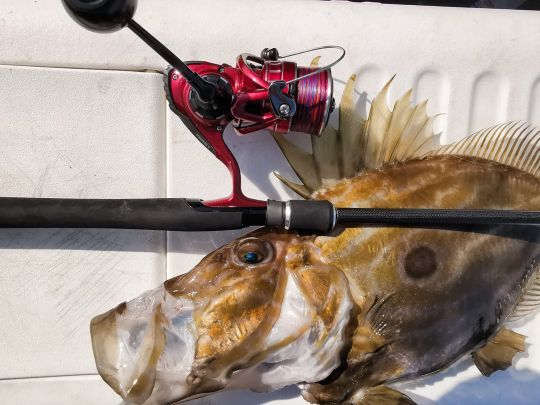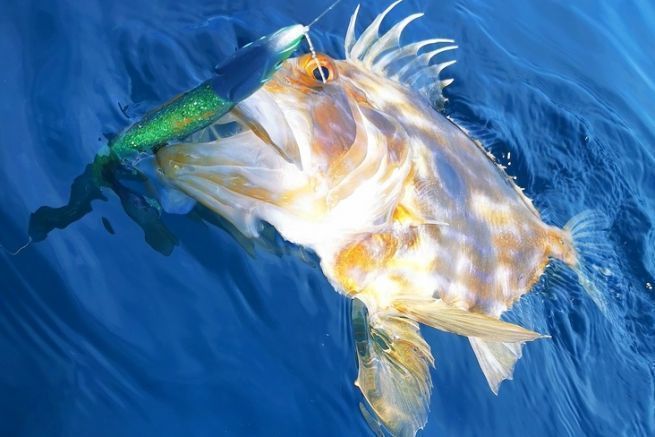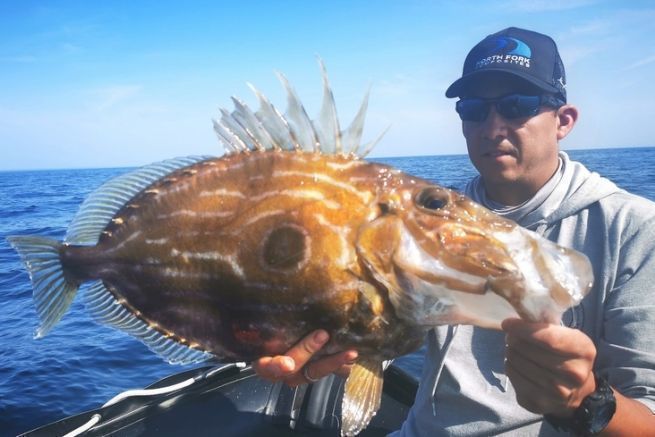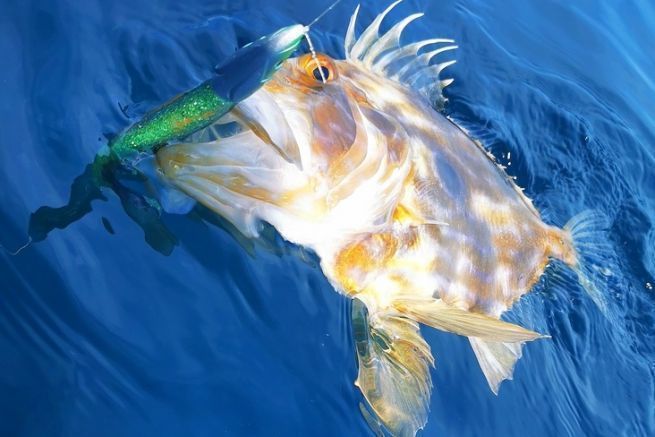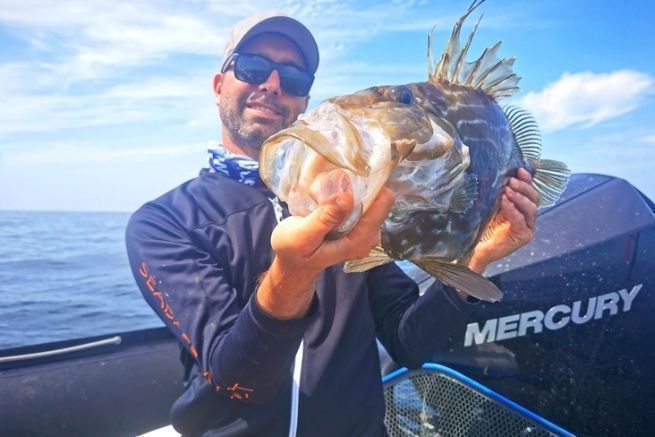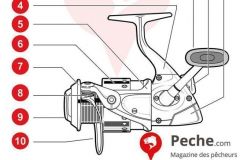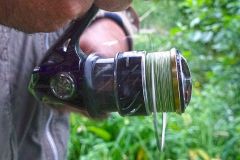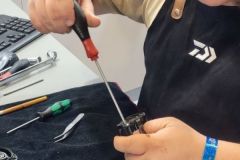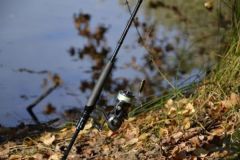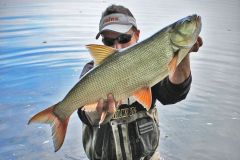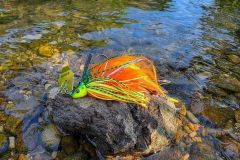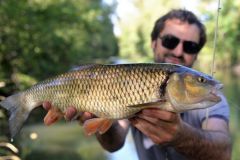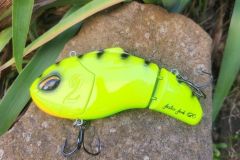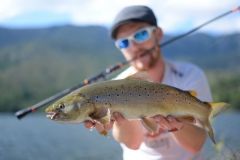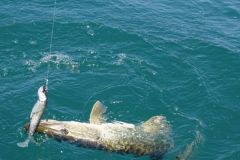Target sandy areas
Now we know a little more about this magnificent fish and the famous legend that precedes it.
The Saint-Pierre fishing I do off the coast of Finistère takes place on sandy areas that I spot by carefully analyzing sediment maps. I do this at home, in advance of the trip, using the Navionics application.
The color variations represent the different types of bottom. As sand is represented by the yellow color, this is where I start my search for Saint-Pierres.
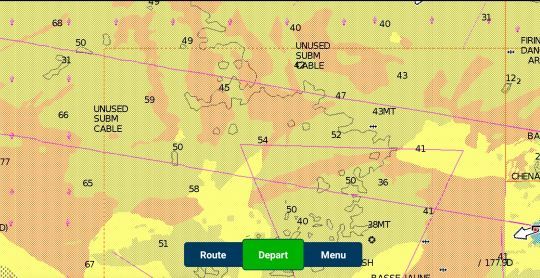
The localized areas are then scanned with a 2D sounder, making tracks to detect sand eel balls, the prey that St. Pierres love. They also appreciate blue fish, such as sardines, small mackerel, etc. In summer, it's easy to spot schools of forage fish, from which predatory fish are never far away.
Big mouth, big lure!
The size of the Saint-Pierre's mouth is impressive! Remember that the head of this fish accounts for about a third of its total size. There's no need to be picky when it comes to soliciting them, choose a large shad, heavily weighted to hold the boat's vertical at best.
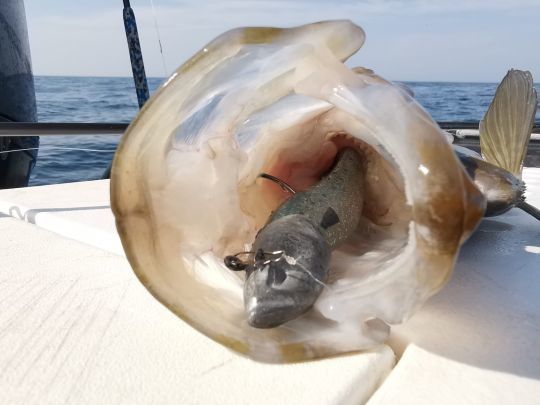
In this fishery, even more than in others, I deliberately overhang my rigs. Traditionally, an average of 1 gram per metre of depth is an effective value. Here, in 40 m of water and 1 knot of drift, I use 120-gram lead heads on which I've mounted an Illex Nitro Shad 180.
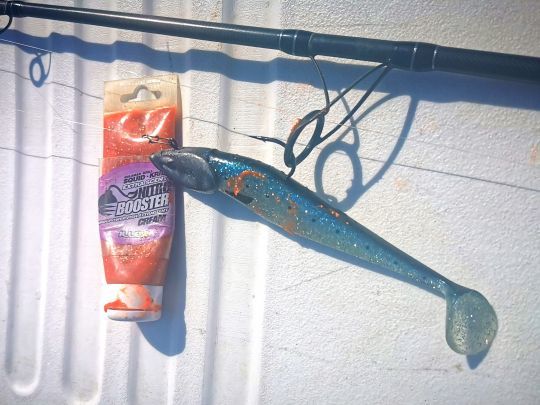
I've noticed a certain preference for blue or pink lures, but that's just me and I'm sure it applies to the area I fish.
Using a jig is just as effective. No secret, in this field I rely on the Ragot Herring model that I presented in a previous article ICI .
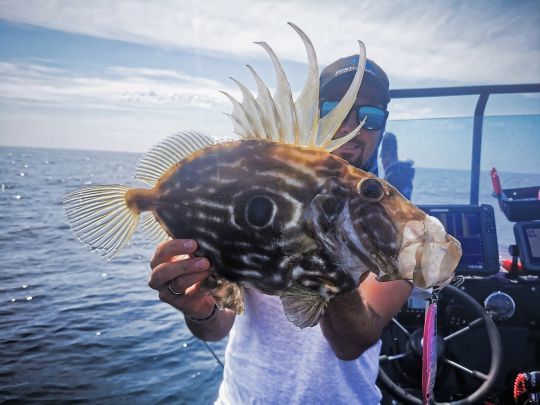
A rod and reel set that can handle heavy lures!
This type of fishing requires the use of fairly heavy lures, hence the need for a powerful rod.
Battles with the St. Peter's are not the most violent. Touches are discreet, and you'll feel as if you're pulling up an amorphous heavyweight, allowing yourself to be hoisted up from the bottom. With its oval shape, resistance is high.
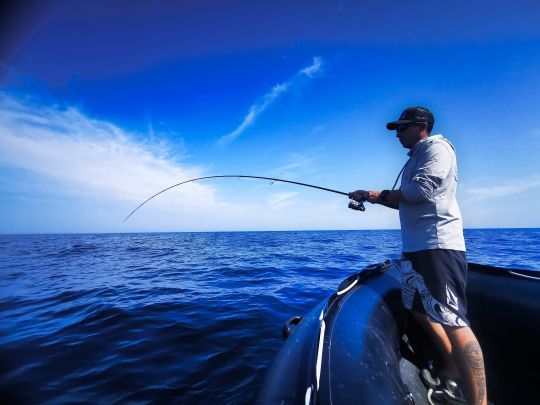
A 2.20 m rod with 20-60 gram or 30-80 gram power and a size 5000 reel fitted with PE 1.5 braid make a good combination.
Finish off with a 35 to 40 hundredths fluorocarbon leader.
